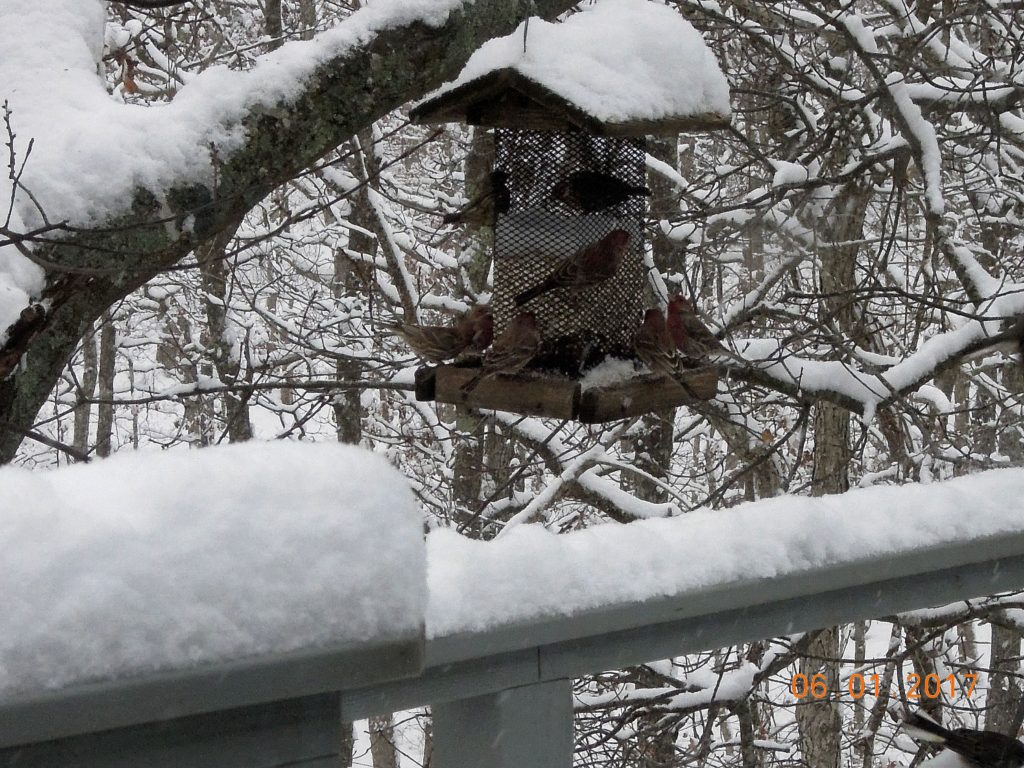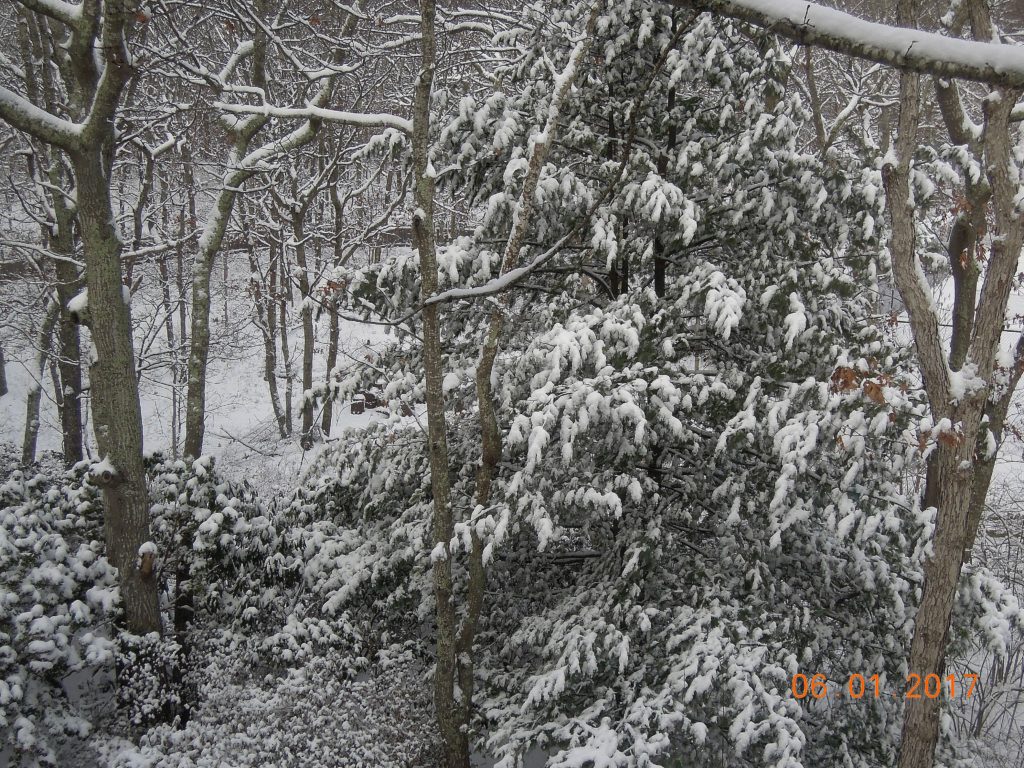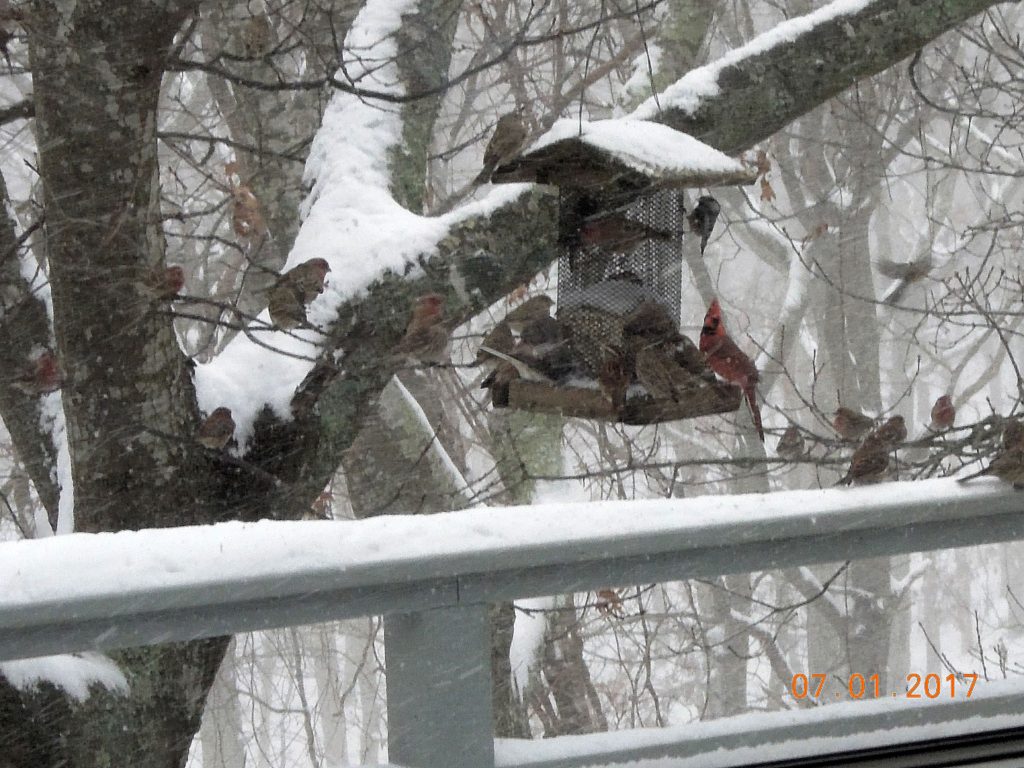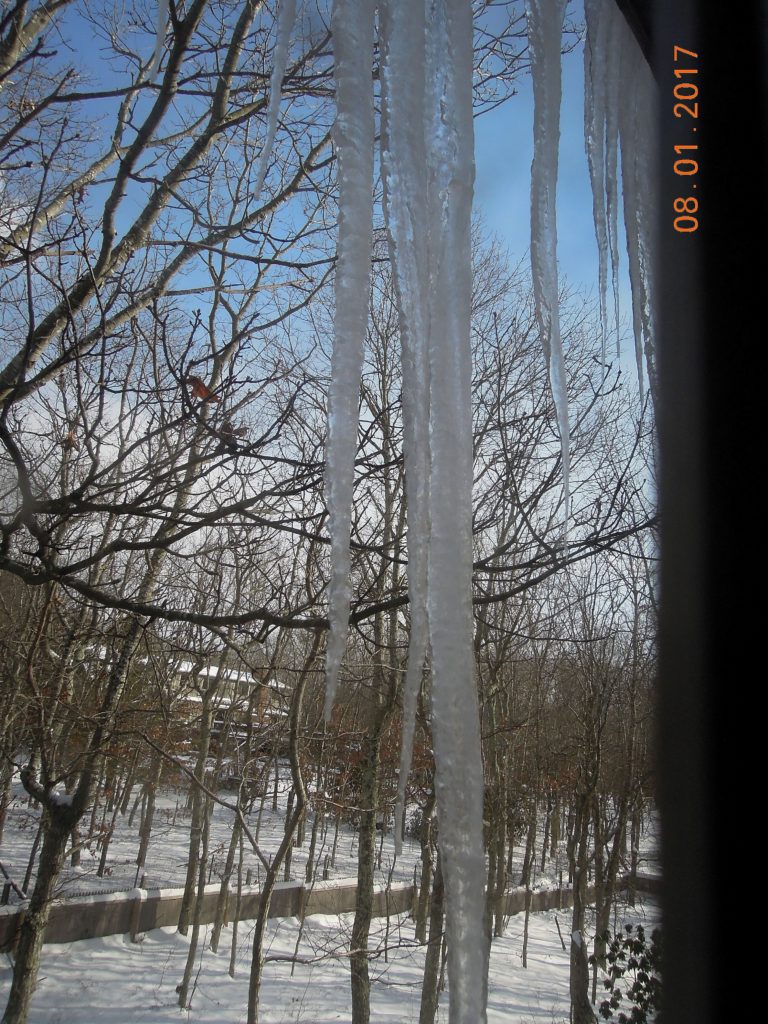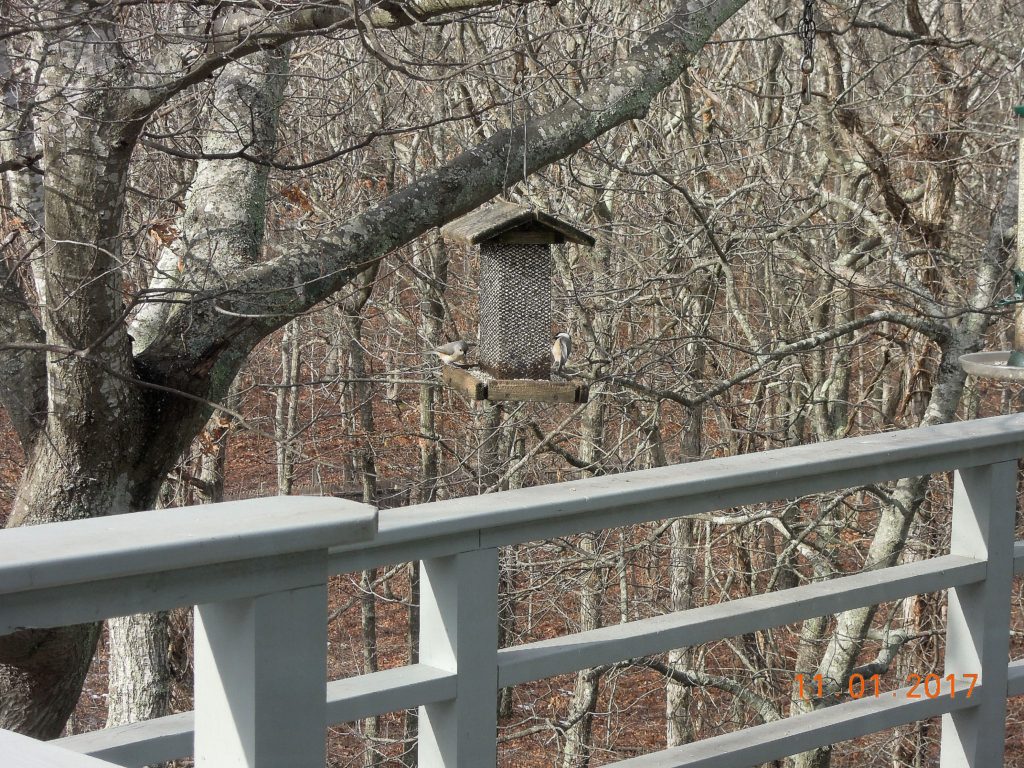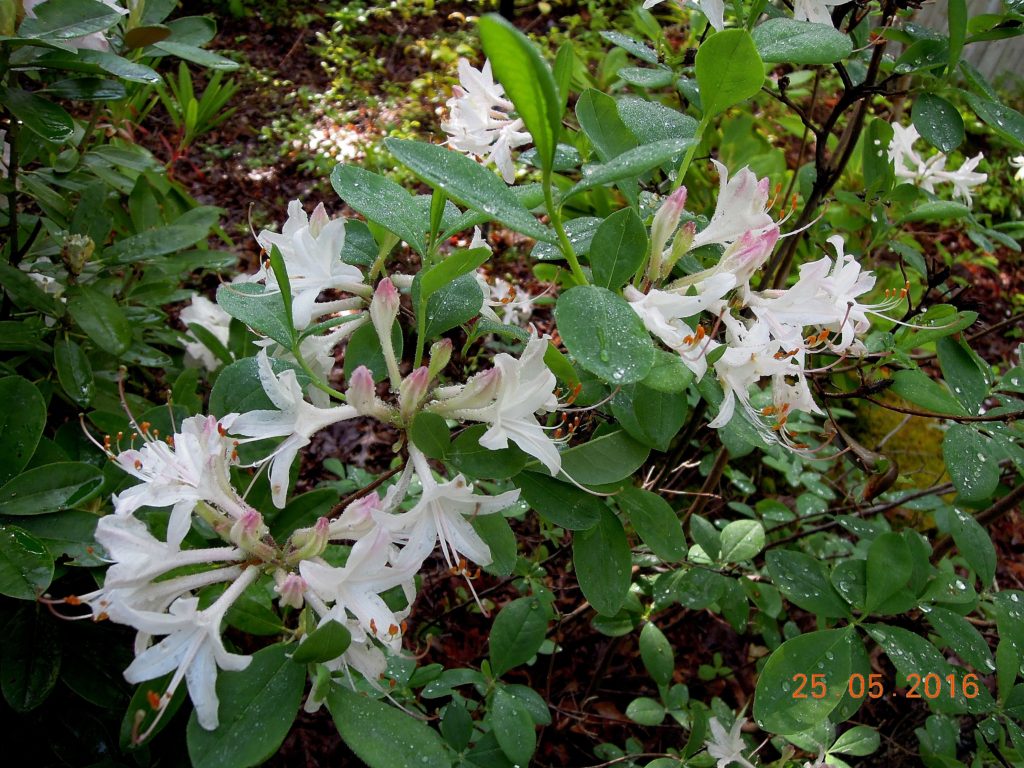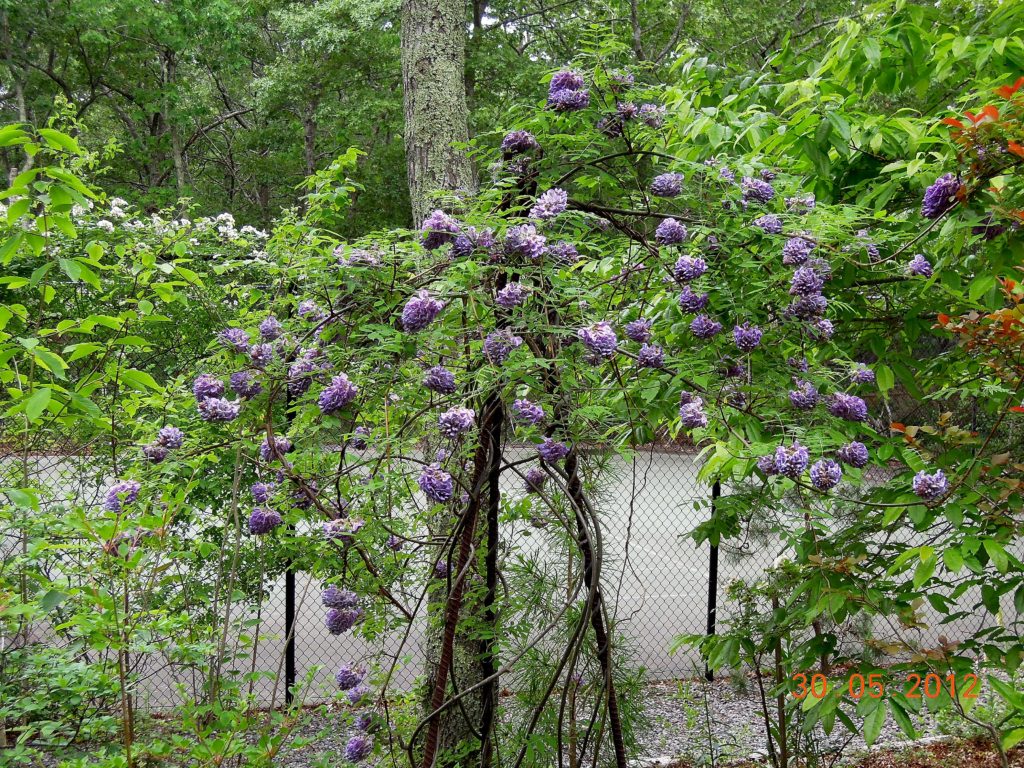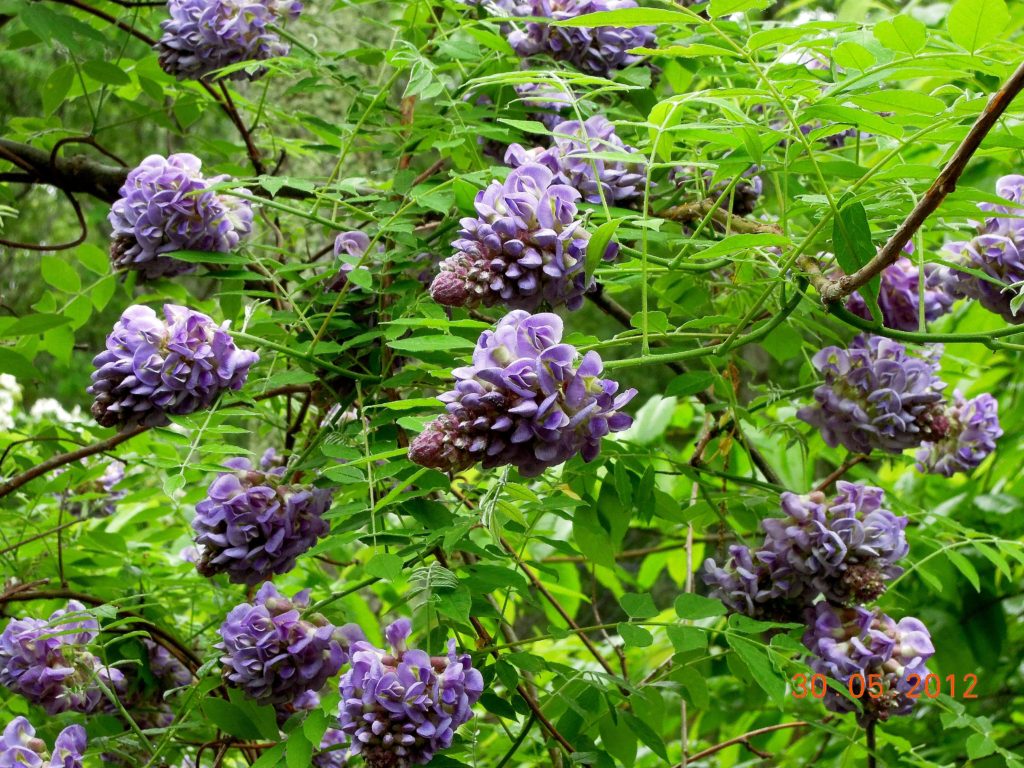It’s the start of a New Year but we gardeners don’t have much to celebrate: Mother Nature has again locked us into a dizzying weather roller coaster. And I mean locked. The first week in January we were housebound for five days after a snow storm. With an accumulation of over a foot of snow and freezing cold temperatures, we couldn’t open a door to the outside. Then the weather turned balmy and all the snow melted. Photos below.
Warm days followed, then freezing temps again, and snow again, and then a return of the tropics AGAIN! These dramatic swings in weather are driving me and the plants cuckoo. As soon as there is a run of warm weather, the buds of a number of spring-flowering shrubs — forsythia, rhododendron, and camellia, to name a few — open and are zapped by frost. Not pretty. And too many plants just up and die.
When I think about the added stress of coping with deer, rabbits, voles, et al., I’m sorely tempted to throw in the trowel.
Ultimately, though, the pleasures of having a garden outweigh the problems. Especially the priceless joy I receive from fragrant plants providing natural aromatherapy in my own backyard. (Recently, I read about a new fragrance trend in New York City luxury apartment buildings: Lobbies and hallways are saturated with synthetic aromas blown in through ductwork or stand-alone machines. Quite frankly, I think it’s dreadful — too much like being caught in an elevator with someone heavily doused in strong cologne.)
Plantsman William Cullina once said, “My favorite part of winter is spring.” On that note, here are two of my favorite Spring-blooming, fragrant, American beauties:
Rhododendron ‘Snowbird’, a deciduous native Azalea (z 6-8), has deliciously fragrant white flowers and blue-green, mildew-resistant foliage. I grow Snowbird in organic rich, well-drained, acid soil, in a shady area close to a path. Photo below.
Wisteria frutescens ‘Amethyst Falls’ (z 5-9), is an award-winning, fragrant, native vine. While the lovely flowers may not be as dazzling as those of its Asian cousins, W. sinensis* and W. floribunda, its reliable bloom and restrained growth are more suitable for a home garden. And my plant does fine in dappled shade. Photos below.
*Note: I have to constantly prune the rapacious roots of my Chinese wisteria, W. sinensis, especially when they sneak into the compost pile. Not to mention that in the wink of an eye its stems wrapped five large oaks in fond embrace.
